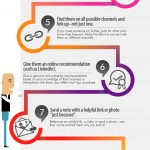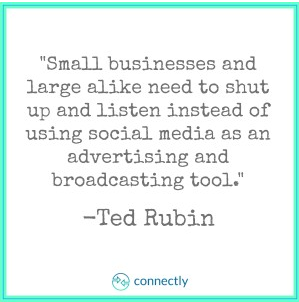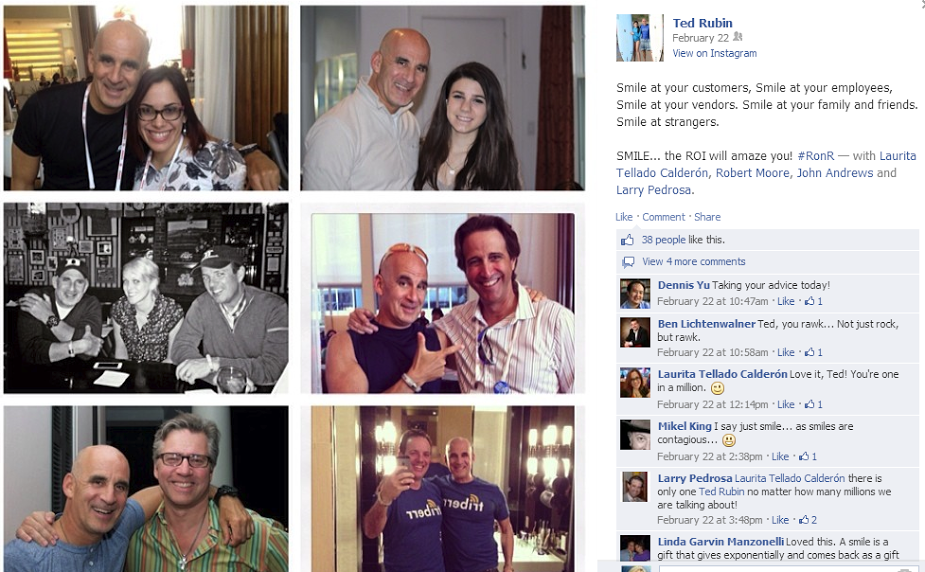A ll Posts
Collecting Customer Data: The Trust Exchange ~via @InsideCXM
Big Data. Big Brother. The NSA debacle. People in the United States are feeling vulnerable. And with all the publicity surrounding online security hacks and stolen account numbers (not to mention all-out identity theft), is it any wonder that consumers are leery of giving brands their personal information?
Evolving Brand Stories From Product to Purpose
THEME #6 OF POST SERIES ON HUMANIZING BRAND STORYTELLING
This post series has so far explored five different ways in which brand stories have evolved in recent years to become more humanized and people-powered. Many of the themes represent manifestations of internal corporate culture, philosophy of leadership, and systems of management and communication. In contrast, the sixth theme is more granular – pertaining to the origin of the story itself. It’s about how source and sentiment can make the difference in creating either information that merely explains “what” or “how” versus actual stories that engage and communicate purpose and reason for being. So what’s driving this defining difference? There are four key areas of disconnect which fuel or weaken a brand’s story engagement potential.
Develop an Acute Ability to Listen
What if your point of difference was an acute ability to listen?
What would that look like?
It always amazes me how many people cut me off mid-sentence, and don’t even let me get my answer out, after they ask me a direct question.
Yes, I recognize listening alone may not set you apart from the competition. From my experience, you may win more business using your ears and eyes than with any other marketing strategy. That’s because, with listening, you can understand your prospect, and that understanding will help you win new business.
The Shorty Interview with Ted Rubin
How much time do you spend online?
Many hours per day… depending upon whether I am in meetings, speaking or at an event or brand meeting.
How do you imagine Twitter changing?
I don’t imagine, but my use will evolve as necessary w/the platform the same as it has with the changes to Facebook. It’s about the people.
Who do you admire most for his or her use of Twitter?
@ValaAfshar
What’s the funniest celebrity tweet you saw in this past year?
I don’t pay too much attention.
How do you pronounce GIF?
JIF
Why’d you start tweeting?
Because back in 2008 @OzSultan told me I had to be on Twitter and @rhollander, believe it or not walked me through the basics.
Small Businesses and Large Alike Need to…
Small businesses and large alike need to shut up and listen instead of using social media as an advertising and broadcasting tool.
They are too worried about who has more Twitter followers and about who has more fans on Facebook. They’re worried about who is getting the message out more consistently on those platforms rather than taking the amazing amount of market intelligence available to them by looking at people that are following them and reading what they are writing on their own pages.
Businesses need to spend less time tweeting and posting to Facebook, and more time reading, listening and understanding what it is their customers really want. They can’t expect to use social media only when it is convenient for them and expect customers to remain engaged.
Way too few companies are empowering their employees on social media, seeing it as a threat instead of a benefit. Small business needs to recognize that their best advocates are their employees. Empower your employees and they will power your brand.
Stories of Leadership: Moving Beyond Authority to Influence
THEME #5 of Post Series on Humanizing Brand Storytelling
A brand’s story is comprised of many elements, phases, and characters. One of the most important being the leadership story of a brand. The rise of social networks has played an important role in bringing the stories of great brands, and the leaders behind these great brands, to life. Social networks have democratized communication between business and people, as well as the conversation regarding leadership. Through social networks, anyone can connect to the inspiring words and shared wisdom of leaders everywhere. Conversely, leaders themselves have access to unlimited sources of inspiration to fuel their vision. Social networks have also redefined how we perceive leaders – and in the process, elevated our expectations. Today, it takes far more than the respect for a title, or recognition of authority, to earn the support and trust of followers. People look for reasons TO BELIEVE in the vision of one potential leader over that of another. When these reasons are grounded in humanizing leadership traits that transcend policy or promise – people can then connect emotionally to a bigger, and unify ideal and story.
Forget B2B or B2C and Focus on BwB or BwC Instead ~guest post via @BLichtenwalner
The terms “Business to Business” (B2B) and “Business to Consumer” (B2C) are outdated. These terms imply your business is doing something to a customer. That may be how business was conducted decades ago, but it’s always been better – and is now necessary – to conduct business with your customer. Business to a customer is a transaction. Business with a customer is a relationship.Whether your customer is a business or a consumer, they prefer a relationship over a transaction.
What’s the ROI of a Smile?
I sent something out on Instagram recently—a photo collage of the smiling faces of friends—with the following comment: “Smile at your customers, Smile at your employees, Smile at your vendors, Smile at your family and friends, Smile at strangers. SMILE… the ROI will amaze you!” It got over 30 likes almost immediately. I sent the same message (and photo) out on Facebook, with even more engagement.
People commented how good it made them feel, and some said they were taking the message to heart and spreading the word. People want to be happy! And when you send them a photo with a smiling face, it generates warm feelings and a wish to keep feeling happy.








